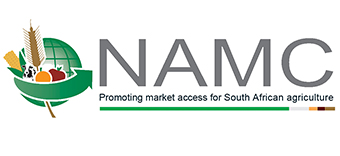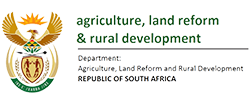Commentary: COVID-19 temporary trade restrictions on rice and its implications for South Africa
By Moses Lubinga
All Southern African Development Community (SADC) member states are net importers of rice. Therefore, South Africa cannot rely on them for the supply of rice. Following the outbreak of the COVID-19 pandemic, many countries imposed temporary trade measures on a number of agricultural products in a bid to ensure that their citizens are food secure, given the looming uncertainty of how long and the extent to which the pandemic will ravage these countries. Countries are also critically looking into how to reposition and sustain their economies after this wave of COVID-19. With South Africa being a net importer of more than 90 % of the rice consumed in the country, the imposition of trade-distorting remedies has a direct effect on the country’s rice food stock, coupled with other spill-over effects such as fluctuation in food prices, food insecurity and possibly food riots, as has been witnessed in other hunger-stricken countries. This commentary provides an account of the likely implications for South Africa due to the temporary trade measures on rice imposed by some rice producing countries. The article also provides insight into the possible interventions through which the effects of similar unforeseen trade-distorting shocks may be abated in the near future.
As of 10 May 2020, 12 countries, namely Vietnam, the Philippines, Myanmar, Mali, India, Kyrgyzstan, Cambodia, El Salvador, Russia, Armenia, Tajikistan and Belarus, had imposed temporary trade measures on rice among other agricultural products. Although trade-liberalizing measures may also indirectly affect South Africa’s rice imports, especially if the country supplying South Africa has stronger trade ties with a country/countries that has/have liberalized trade in rice, restrictive trade measures remain to be of more critical importance to South Africa – hence the focus of this article. Imposed trade-restrictive measures include the prohibition of rice exports, the imposition of export quotas (Vietnam), as well as the acquisition of a licence or permit to export rice (India). The first restriction imposed by Vietnam came into effect on 25 March 2020 while the most recent restriction was enacted on 25 April 2020 by Tajikistan (Market Access Map, 2020). However, by mid-May 2020, Viet Nam, Myanmar and Cambodia had terminated the restrictive trade measures. Therefore, given the above timelines, available trade statistical data cannot provide a clear picture of the actual implications coupled with the major uncertainty about the duration of these restrictions. Moreover, the volume of rice consignments, if any, that were in transit at the time these trade restrictions came into force is also not known.
However, negative implications in the form of a drastic increase in the retail prices of rice and the other closely related staple food items are bound to arise if the various value chain or market players raise fears of dwindling rice stocks in the country. For now, the agricultural sector at large is equipped to sustainably supply other staple food items like maize meal, in case there is rice shortage at a later date especially if these trade-restrictive measures be in force for a long period of time or should South Africa’s major suppliers of rice also choose to impose restrictions. Moreover, unlike India and Vietnam, which supply plausible quantities of rice, the volume of rice sourced from Myanmar is negligible. About 95 % of South Africa’s rice is imported from Thailand (71 %) and India (23.4 %). Other countries, i.e. Armenia, Belarus, Cambodia, El Salvador, Kyrgyzstan, Mali, Philippines, Tajikistan and Russia, do not supply rice to South Africa. Therefore, there are no foreseeable consequences for South Africa due to the restrictive trade measures imposed on rice by some countries during the COVID-19 pandemic, especially if the trade measures are not in effect for a prolonged period.
However, the following interventions deserve considerable attention in preparation for similar unforeseen trade distorting shocks that may arise in the near future:
- To address the issue of reliance on rice imports, it is high time the few farmers who are producing rice in South Africa are supported to upscale their production. A study funded by the Department of Science and Innivation (DSI), and conducted by the Agricultural Research Council (ARC) in collaboration with the NAMC and the Land Bank, reveals that rice production is already happening in the country, although on a scale by far insufficient to meet the domestic demand for rice. The school of thought that South Africa is a water-scarce country, thereby implying that the country cannot venture into commercial rice production, might have
to be revisited since existing scientific evidence suggests that there are a number of upland rice varieties that give good yields on dryland. Doctoral research undertaken at the University of Pretoria also shows that high yields of rice can be attained in South Africa. Thus, South Africa may explore the production of dryland rice varieties rather than varieties that grow in paddy fields. - Secondly, as decisions to embark on commercial rice production are being thought through, South Africa should leverage on the enacted Africa Continental Free Trade Agreement (AfCFTA) to co-invest in rice production in countries with the comparative and competitive advantage to do so, such that rice imports from those specific countries become easily accessible and affordable to South Africa’s consumers. Some of the top rice producers on the continent, such as Madagascar and Tanzania, export some of their rice out of Africa to France, Turkey and Oman, among other countries. Although a small proportion of rice is exported out of Africa, this presents an opportunity for African states to work together in boosting rice production to feed its fast-growing population.

